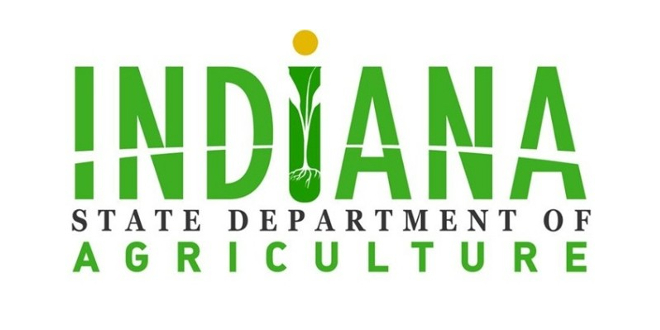INDIANAPOLIS (April 25, 2018) – Indiana farmers planted 970,000 acres of cover crops in 2017, according to a recent survey. Cover crops are now the third-most planted crop in the state, next to corn and soybeans.
“With the late harvest and heavy rains farmers experienced last fall, seeing close to one million acres of cover crops growing is no small accomplishment and worth celebrating,” said Jill Reinhart, acting state conservationist for Indiana’s Natural Resources Conservation Service (NRCS). “This year’s data shows that Indiana once again sets the bar, nationally, when it comes to incorporating conservation on the farm.”
According to NRCS, cover cropping has many benefits including increased organic matter, improved soil biology, as well as better water infiltration and water-holding capacity. This practice also prevents nutrients and sediment from running off the farm, keeping them out of nearby waterbodies and streams.
As a result of the cover crops planted last fall, more than 2.9 million pounds of nitrogen, 1.4 million pounds of phosphorus and 1.2 million tons of sediment were prevented from entering Indiana’s waterways. That’s enough sediment to fill 12,000 train cars stretching 113 miles long, the survey claims.
“Farmers continue to recognize the importance and are finding value in planting cover crops,” said Bruce Kettler, director of the Indiana State Department of Agriculture (ISDA). “Keeping more nutrients on the land, not only improves soil health and water quality, but also a farmer’s bottom line.”
Dan Sutton, of Sutton Farms in Lowell, Ind., first planted cover crops in 2008 and started seeing results the following year.
“We found in 2009 a pretty good yield increase on those cover cropped acres,” Sutton said. “That turned a light bulb on, and we said, ‘Hey, let’s look into this more and see what we can do with it.’”
For the past several years, Sutton has tried to plant cover crops on 100 percent of his 1,300 acre farm. Although he’s encountered challenges along the way, he believes that the benefits to his soil and the environment outweigh the risks.
In addition to cover crops, the survey also measures trends related to crop residue, which is the organic material left in the field after harvest. Crop residue further reduces sediment and nutrient runoff by protecting the soil from fall, winter and spring rain events. A no-till system leaves the most residue.
The survey shows that Indiana farmers left their crop residues undisturbed on: 67 percent of soybean acres, 63 percent of corn acres, 46 percent of small grain acres and 20 percent of specialty crop acres.
The cover crop transect survey is a collaborative effort between NRCS, ISDA, Indiana’s 92 Soil and Water Conservation Districts, Earth Team volunteers and other members of the Indiana Conservation Partnership, who team up to conduct a visual assessment of cropland county by county. The goal of the survey is to help document a more complete story of Indiana’s conservation efforts.
To learn more about the survey, visit www.in.gov/isda/2383.htm, or to find transect data for your county, visit your local Soil and Water Conservation District office at www.in.gov/isda/2370.htm.
 WYRZ.org 98.9 WYRZ – The Voice of Hendricks County
WYRZ.org 98.9 WYRZ – The Voice of Hendricks County





